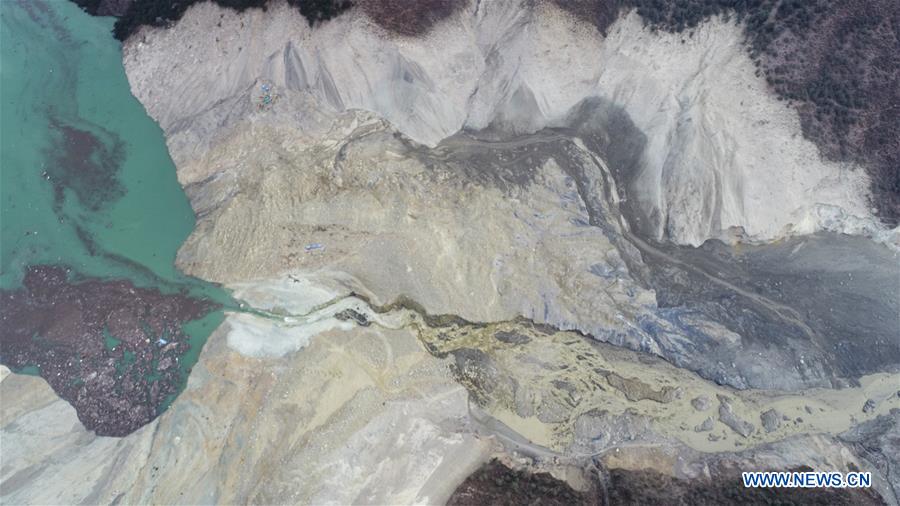New railway to boost Tibet's development
Highlighting the importance of the Ya'an-Nyingchi section of the Sichuan-Tibet Railway, President Xi Jinping said on Sunday that greater efforts should be made to build a high-quality railway because it will play a key role in the socioeconomic development of the country's western region.
The 1,742.39-kilometer-long Sichuan-Tibet Railway, a key project listed in the 14th Five-Year Plan (2021-25), will cost about 360 billion yuan ($54.8 billion), run alongside the Sichuan-Tibet highway and will take just 13 hours to cover the distance from Chengdu, capital of Sichuan province, to Lhasa, capital of the Tibet autonomous region.
The Sichuan-Tibet Railway has three sections. The Chengdu-Ya'an section in Sichuan is basically complete. Workers are already laying the track on the Nyingchi-Lhasa section in Tibet. As for the middle or Ya'an-Nyingchi section, work on which started on Sunday, the steep mountains, and valleys and gorges in western Sichuan and Tibet make it one of the most challenging railway projects in history.
Overall, the Sichuan-Tibet Railway will be another important transport channel linking Tibet to the rest of China and improve travel in eastern Tibet, western Sichuan and the surrounding areas. It will not only strengthen the national transportation network and make travel more convenient, but also help develop green tourism, boost local industries, alleviate poverty by increasing local people's income, and instill a greater sense of national identity among all ethnic groups.
The railway will also help build a national security barrier in Tibet, consolidating national unity, maintaining stability in the border areas, strengthening cultural exchanges and economic and trade between China and South Asian countries, and facilitating the implementation of the Belt and Road Initiative with the aim of building a community with a shared future for mankind.
From an economic perspective, the Sichuan-Tibet Railway will help the Tibet autonomous region to sustain its economic development and lay a solid foundation for long-term development. The railways are the arteries of national development, and by extending Tibet's rail network, both internally and externally, the Sichuan-Tibet Railway will open new avenues for the region's development.
The construction of a highly efficient traffic network in Tibet will make life more convenient for the local residents, and reduce overall travel and logistics costs. The supply of a wider variety of daily consumer goods at relatively low prices in Tibet will lower local residents' cost of living and improve their quality of life. The construction of the railway will also make Tibetan products more competitive by helping reduce their prices, and promote the development of distinctive cultural industries on the Qinghai-Tibet Plateau.
Tourism is an important pillar industry of Tibet. But tourists are mainly concentrated in central Tibet as it is well connected to other parts of the country by flights, trains and roads. The Sichuan-Tibet Railway will run through picturesque natural landscapes including mountains, valleys and rivers and important cultural landscapes, which cannot be easily accessed now. And after its completion, the railway will not only make traveling between Tibet and the rest of the country more convenient but also help tourists traveling to eastern Tibet to gradually adapt to the low oxygen levels on the Qinghai-Tibet Plateau and better enjoy their visit.
The Sichuan-Tibet Railway's construction has not only created a large number of jobs along the route, but is also helping revitalize the local countryside. It will also boost the social transformation and modernization of Tibet. And by improving the transport network in eastern and southeastern Tibet, it will create a sound business environment for Tibet to attract foreign enterprises, capital and talents to participate in its development.
Moreover, the Sichuan-Tibet Railway will connect the China-India-Bangladesh-Myanmar economic corridor to the Yangtze River and Shaanxi-Gansu-Qinghai-Tibet economic belts, and thus extend the Silk Road Economic Belt. It will also accelerate cultural and personnel exchanges between Tibet and the rest of country, narrowing their geographical and psychological distance.
The Qinghai-Tibet Railway has become a model of China's railway construction not only for taking utmost care to protect Tibet's fragile ecology and environment but also for completing construction on schedule despite all odds including the treacherous terrain and weather of the mountainous region.
Some sections of the Sichuan-Tibet Railway face no less adverse construction and environmental challenges. For the most difficult section, from Ya'an to Nyingchi, new construction technologies need to be explored, which will fill many of the scientific and technological gaps and enable China to gain valuable technological expertise that it can use in future railway construction projects. However, dealing with special geological problems with nuanced care and taking measures to prevent geological and environmental disasters will continue to be the norm for the Sichuan-Tibet Railway project.
Your Comment
Name E-mail






